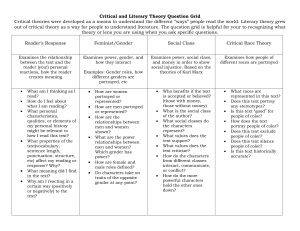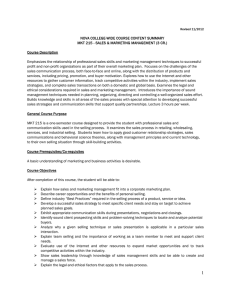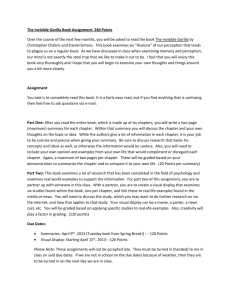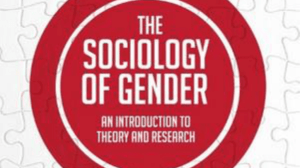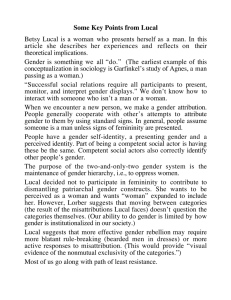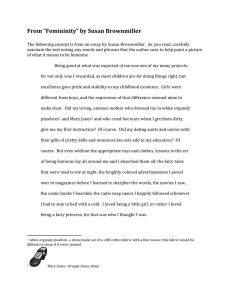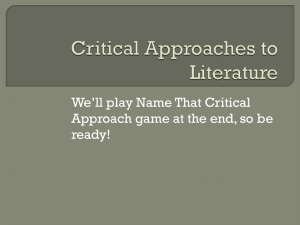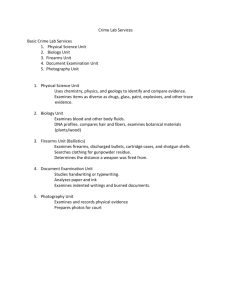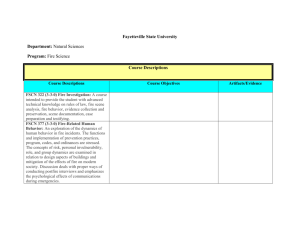Critical Theory Question Grid
advertisement
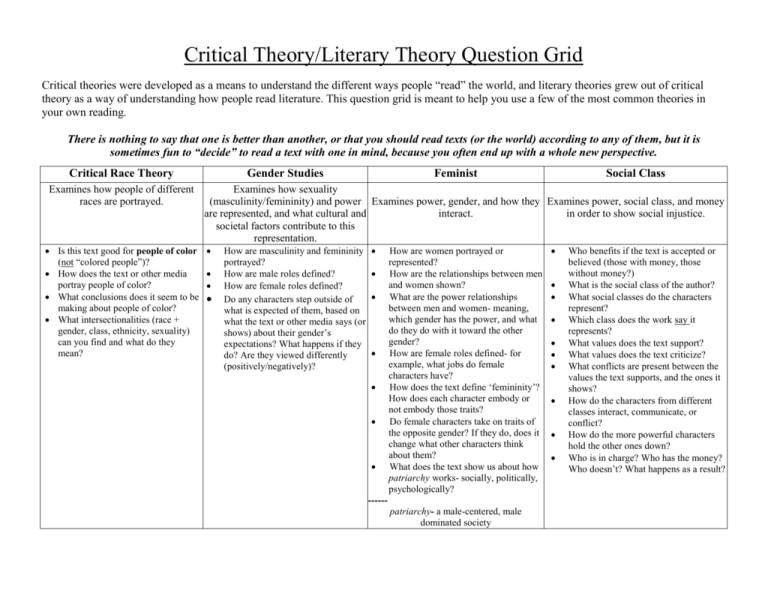
Critical Theory/Literary Theory Question Grid Critical theories were developed as a means to understand the different ways people “read” the world, and literary theories grew out of critical theory as a way of understanding how people read literature. This question grid is meant to help you use a few of the most common theories in your own reading. There is nothing to say that one is better than another, or that you should read texts (or the world) according to any of them, but it is sometimes fun to “decide” to read a text with one in mind, because you often end up with a whole new perspective. Critical Race Theory Examines how people of different races are portrayed. Gender Studies Feminist Social Class Examines how sexuality (masculinity/femininity) and power Examines power, gender, and how they Examines power, social class, and money are represented, and what cultural and interact. in order to show social injustice. societal factors contribute to this representation. Is this text good for people of color (not “colored people”)? How does the text or other media portray people of color? What conclusions does it seem to be making about people of color? What intersectionalities (race + gender, class, ethnicity, sexuality) can you find and what do they mean? How are masculinity and femininity portrayed? How are male roles defined? How are female roles defined? Do any characters step outside of what is expected of them, based on what the text or other media says (or shows) about their gender’s expectations? What happens if they do? Are they viewed differently (positively/negatively)? How are women portrayed or represented? How are the relationships between men and women shown? What are the power relationships between men and women- meaning, which gender has the power, and what do they do with it toward the other gender? How are female roles defined- for example, what jobs do female characters have? How does the text define ‘femininity’? How does each character embody or not embody those traits? Do female characters take on traits of the opposite gender? If they do, does it change what other characters think about them? What does the text show us about how patriarchy works- socially, politically, psychologically? -----patriarchy- a male-centered, male dominated society Who benefits if the text is accepted or believed (those with money, those without money?) What is the social class of the author? What social classes do the characters represent? Which class does the work say it represents? What values does the text support? What values does the text criticize? What conflicts are present between the values the text supports, and the ones it shows? How do the characters from different classes interact, communicate, or conflict? How do the more powerful characters hold the other ones down? Who is in charge? Who has the money? Who doesn’t? What happens as a result?
